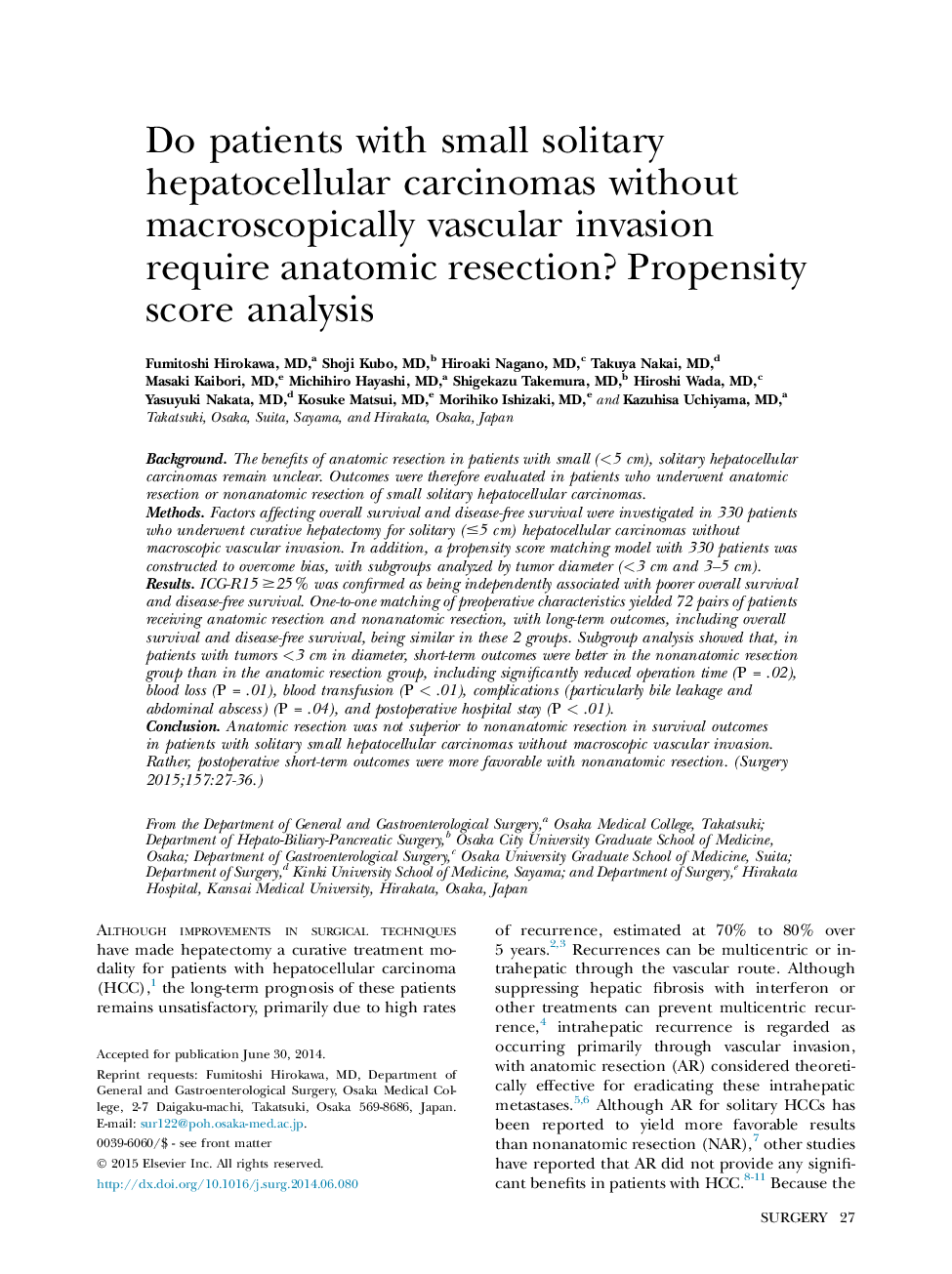| Article ID | Journal | Published Year | Pages | File Type |
|---|---|---|---|---|
| 4307305 | Surgery | 2015 | 10 Pages |
BackgroundThe benefits of anatomic resection in patients with small (<5 cm), solitary hepatocellular carcinomas remain unclear. Outcomes were therefore evaluated in patients who underwent anatomic resection or nonanatomic resection of small solitary hepatocellular carcinomas.MethodsFactors affecting overall survival and disease-free survival were investigated in 330 patients who underwent curative hepatectomy for solitary (≤5 cm) hepatocellular carcinomas without macroscopic vascular invasion. In addition, a propensity score matching model with 330 patients was constructed to overcome bias, with subgroups analyzed by tumor diameter (<3 cm and 3–5 cm).ResultsICG-R15 ≥25% was confirmed as being independently associated with poorer overall survival and disease-free survival. One-to-one matching of preoperative characteristics yielded 72 pairs of patients receiving anatomic resection and nonanatomic resection, with long-term outcomes, including overall survival and disease-free survival, being similar in these 2 groups. Subgroup analysis showed that, in patients with tumors <3 cm in diameter, short-term outcomes were better in the nonanatomic resection group than in the anatomic resection group, including significantly reduced operation time (P = .02), blood loss (P = .01), blood transfusion (P < .01), complications (particularly bile leakage and abdominal abscess) (P = .04), and postoperative hospital stay (P < .01).ConclusionAnatomic resection was not superior to nonanatomic resection in survival outcomes in patients with solitary small hepatocellular carcinomas without macroscopic vascular invasion. Rather, postoperative short-term outcomes were more favorable with nonanatomic resection.
